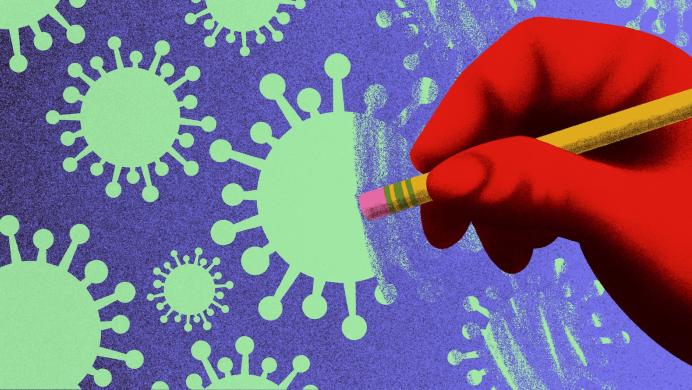

Mitigating Medical Misinformation: A Whole-of-Society Approach to Countering Spam, Scams, and Hoaxes
DOI: https://doi.org/10.37016/TASC-2021-03
EXECUTIVE SUMMARY
is a specific and pernicious problem exacerbating what the World Health Organization has termed the “infodemic.”1 Though it can often result in the spread of harmful , media manipulation is understudied and therefore currently remains a major vulnerability for public health. During the SARS-CoV-2 (COVID-19) pandemic, media manipulation campaigns focused on pushing harmful medical misinformation have targeted health experts, undermined legitimate advice, and sowed mistrust at a time when reliable information is needed the most. By grabbing the public’s attention during an information and health crisis, media manipulation that spreads medical misinformation can result in people not following expert advice, which, in turn, can exacerbate the spread of the coronavirus and result in illness and death.
Media manipulation is a process, whereby motivated actors leverage conditions or features within an information ecosystem to manipulate the public using the press, networked technology systems, and influential organizations to advance their agenda. It is undertaken by both state and non-state actors. It can have widespread impacts on societies across the globe.
This addresses how the public health sector, along with a coalition of civil servants, media workers, technology companies, and organizations, must understand and respond to the problem of medical media manipulation, specifically how it spreads online. Here we present a supplementary research-and-response method in correspondence with the World Health Organization (WHO)’s already suggested framework for dealing with the infodemic,2 with a focus on media manipulation.
Compiled by an expert team of researchers at Harvard’s Shorenstein Center on Media, Politics and Public Policy, this brief describes the intentional and directed phenomenon of media manipulation, provides case studies about media manipulation campaigns that spread medical misinformation, and offers actionable insights for how to track and counter their harms.
The following recommendations are grounded in a robust model: the Media Manipulation Life Cycle, which allows researchers and health officials to understand how, when and why to intervene in manipulation campaigns. All forms of media manipulation follow a stereotyped life cycle, which, once understood, can be recognized and mitigated. That life cycle has five stages:
- Campaign planning and origins
- Seeding the campaign across social platforms and the web
- Responses by industry, activists, politicians and journalists
- Adjustments by manipulators to the new environment
To understand exactly how to respond to a campaign, we provide a response matrix that public health stakeholders can use when encountering harmful media manipulation. An included situational analysis worksheet will help public health advocates determine the best course of action to take and when to undertake it.
These recommendations are based on years of research into how dangerous misinformation spreads, what techniques work to contain it, and how stakeholders can stop media manipulation campaigns before they can grow. Furthermore, this advice is designed to work within any cultural context. It is fluid, and reliant on the method of research known as investigative digital ethnography, which takes into account the differences in geography, culture, language, law and demographic diversity, so that these recommendations can be tailored to specific environments as per the needs of the locale and situation.
Key actionable recommendations for public health officials include advice on how to:
- survey, collect and document misinformation;
- determine where in the media manipulation life cycle misinformation falls;
- boost timely, relevant, local and accurate content;
- engage trustworthy press to correct misinformation when necessary and not before;
- build early warning networks across civil society, journalism and public health institutions;
- coordinate counter-messaging with civil society networks and technology companies;
- monitor the impacts of mitigation efforts and adjust messaging as needed.
Along with short-term recommendations, we also recommend long-term strategies to combat media misinformation. These include:
- understanding how political cleavages, wedge issues and socioeconomic issues affect the spread of ;
- monitoring the community’s perception of trust in the media and authorities to understand how best to address them;
- continuously calling for transparency by technology companies.
This brief calls for a “whole-of-society” networked response to medical media manipulation, where stakeholders in the private sector, public sector and civil society are able to work towards a common goal – to provide accurate health information amid an infodemic. What follows is a detailed policy on how these groups can work together to minimize the deleterious effects of media manipulation on societies across the world.
For more, watch Joan Donovan talk about the infodemic and responding to media manipulation campaigns below:
- 1World Health Organization, “An ad-hoc WHO technical consultation managing the COVID-19 infodemic: call for action,” WHO, September 15, 2020, https://www.who.int/publications/i/item/9789240010314.
- 2An Ad Hoc WHO Technical Consultation: Managing The COVID-19 Infodemic: Call For Action, 7-8 April 2020 (Geneva: World Health Organization; 2020), https://www.who.int/publications/i/item/9789240010314.
